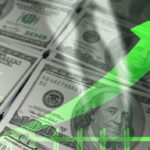
(WASHINGTON) — The U.S. economy slowed at the start of 2023, suggesting that an aggressive series of interest rate hikes at the Federal Reserve has cooled business activity even as the stock and job markets have made gains.
U.S. gross domestic product grew by a 1.1% annualized rate over the three months ending in March, according to government data released Thursday. The data marked a slowdown from 2.6% growth in the previous quarter. In turn, that performance indicated a downshift from 3.2% growth in the previous quarter.
Consumer spending, which accounts for roughly two-thirds of the U.S. economy, surged over the first three months of this year, said the Bureau of Economic Analysis, a government agency.
Government spending at the federal and local level also fueled the economic growth, the agency said.
However, the slowdown from the previous quarter resulted from a decline in business investment and residential fixed investment, which includes money spent on home buying and construction, the data showed.
The data offers a snapshot of economic activity over a period that brought robust hiring but also a banking meltdown on a scale last seen in the 2008 financial crisis.
The widely anticipated measure arrives at a sensitive moment for the U.S. economy.
Over the last year, the Fed has imposed rate hikes last seen in the 1980s.
The policy aims to slash inflation, but risks slowing the economy and bringing about a recession.
So far, the approach has succeeded in cooling price hikes, but fallen short of the Fed’s goal.
Consumer prices rose 5% last month compared to a year ago, extending a months-long slowdown of price increases, but leaving inflation more than double the target rate of 2%.
Meanwhile, a variety of measures suggest that economic performance remains robust, but has slowed in recent months.
The U.S. added 236,000 jobs in March, which marks strong job growth, but a reduction from an average of 334,000 jobs added each month over the previous six months, according to government data released last week.
Meanwhile, U.S. retail sales fell moderately in February but remained solid, suggesting that households still retain some pandemic-era savings.
Still, the economy remains under threat of a recession.
Fed economists said in March that they anticipate a “mild” recession later this year, escalating a previous forecast, central bank meeting minutes showed.
Sixty-five percent of economists expect a recession within the next year, according to a Bloomberg survey last month.
Many observers define a recession through the shorthand metric of two consecutive quarters of decline in inflation-adjusted GDP.
The National Bureau of Economic Research, or NBER, a research organization seen as an authority on measuring economic performance, uses a more complicated definition that takes into account several indicators that must convey “a significant decline in economic activity spread across the economy, lasting more than a few months,” the group says.
This definition determines whether a downturn is formally designated as a recession, since the NBER is the official arbiter on the subject.
Copyright © 2023, ABC Audio. All rights reserved.
